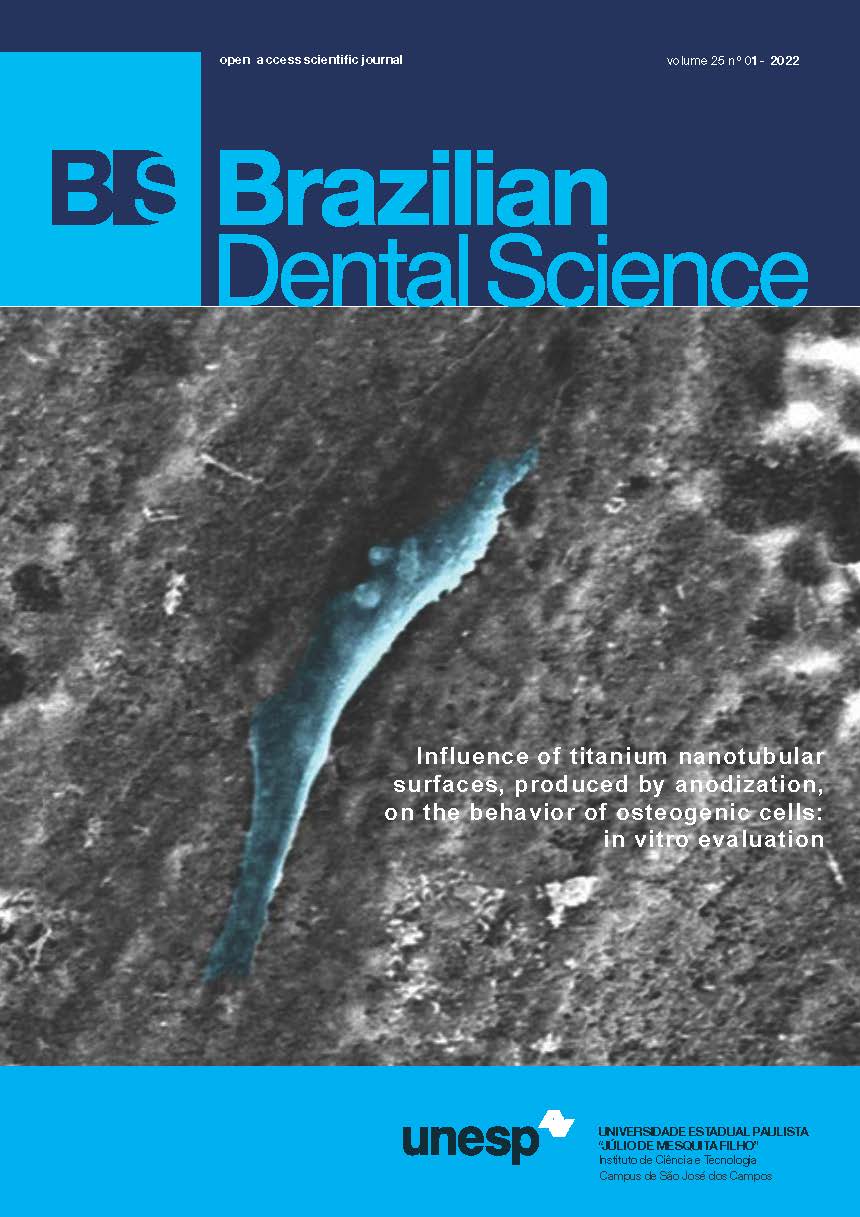Frequency of oral Lichen Planus among hypothyroid patients
DOI:
https://doi.org/10.4322/bds.2022.e2884Abstract
Objective: Recent investigations have suggested a correlation between thyroid diseases, particularly hypothyroidism
(HT), and oral lichen planus (OLP). Objective: This study aimed to assess the frequency of OLP in HT patients.
Material and Methods: This analytical descriptive study evaluated 100 HT patients including 94 females and
6 males, who were selected by convenience sampling. The subjects were clinically examined for OLP. The mean
age of patients was 42.49±1.29 years. Also, 100 age- and sex-matched healthy controls were examined. The
data were analyzed using chi-square test and Fisher’s exact test via SPSS. Results: Of all, 14 (14%) HT patients
(12 females and 2 males) had OLP while only one case of OLP was found in the control group. The difference
between the two groups in the frequency of OLP was significant (P=0.001). The odds ratio (OR) of developing
OLP was calculated to be 16.11 in HT patients. Reticular form was the most common type of OLP in patients
(50%). The buccal mucosa was the most common site of involvement (92.85%). The mean age of patients with
OLP was 42.93±1.29 years with a median of 46±1.29 years in HT group. Conclusion: The frequency of OLP
was significantly higher in HT patients such that HT patients had higher odds of developing OLP by 16 folds.
KEYWORDS
Hypothyroidism; Oral lichen planus; Frequency; Comparison.
Downloads
Downloads
Published
Versions
- 2022-03-29 (2)
- 2022-02-02 (1)
How to Cite
Issue
Section
License
Brazilian Dental Science uses the Creative Commons (CC-BY 4.0) license, thus preserving the integrity of articles in an open access environment. The journal allows the author to retain publishing rights without restrictions.
=================




























